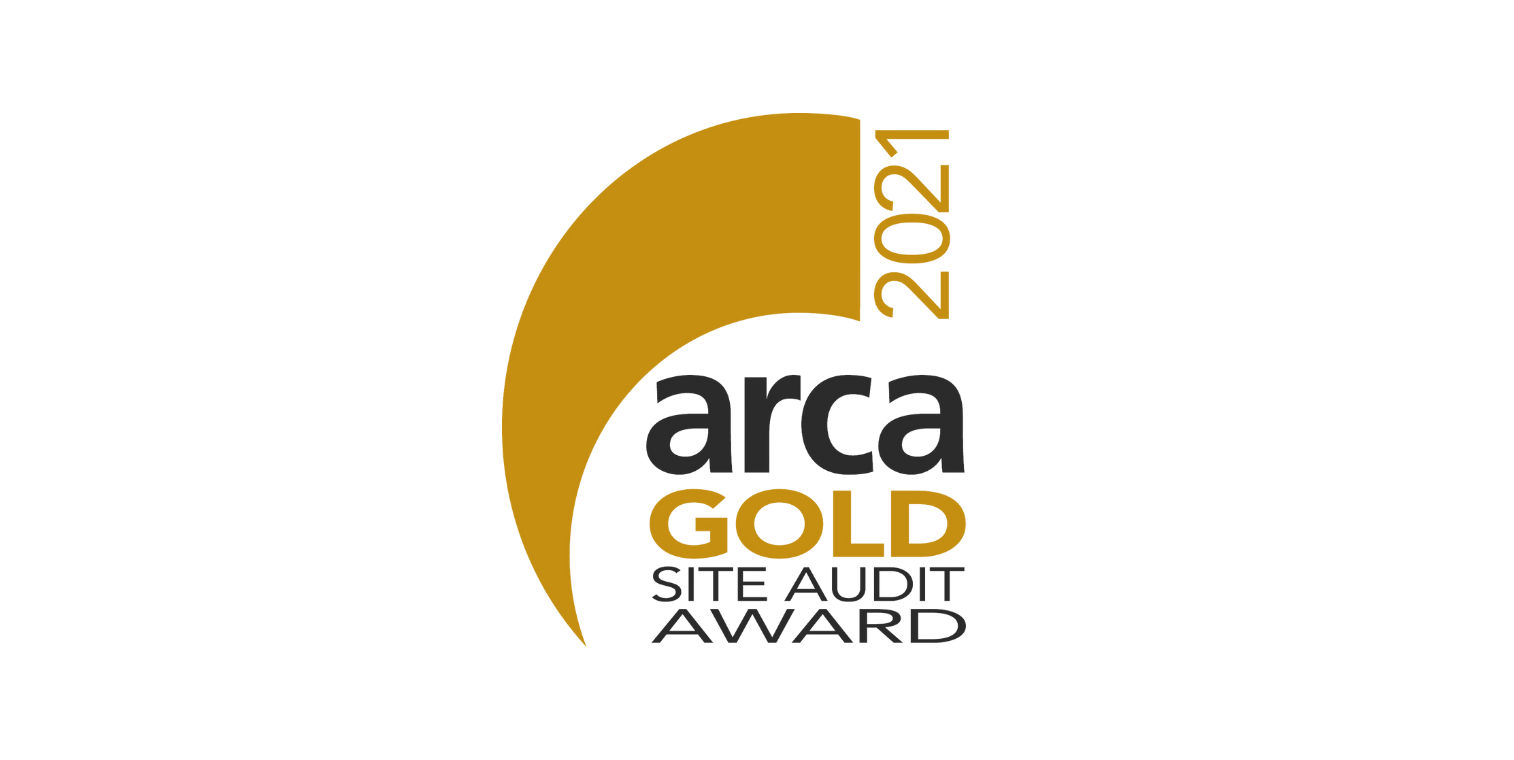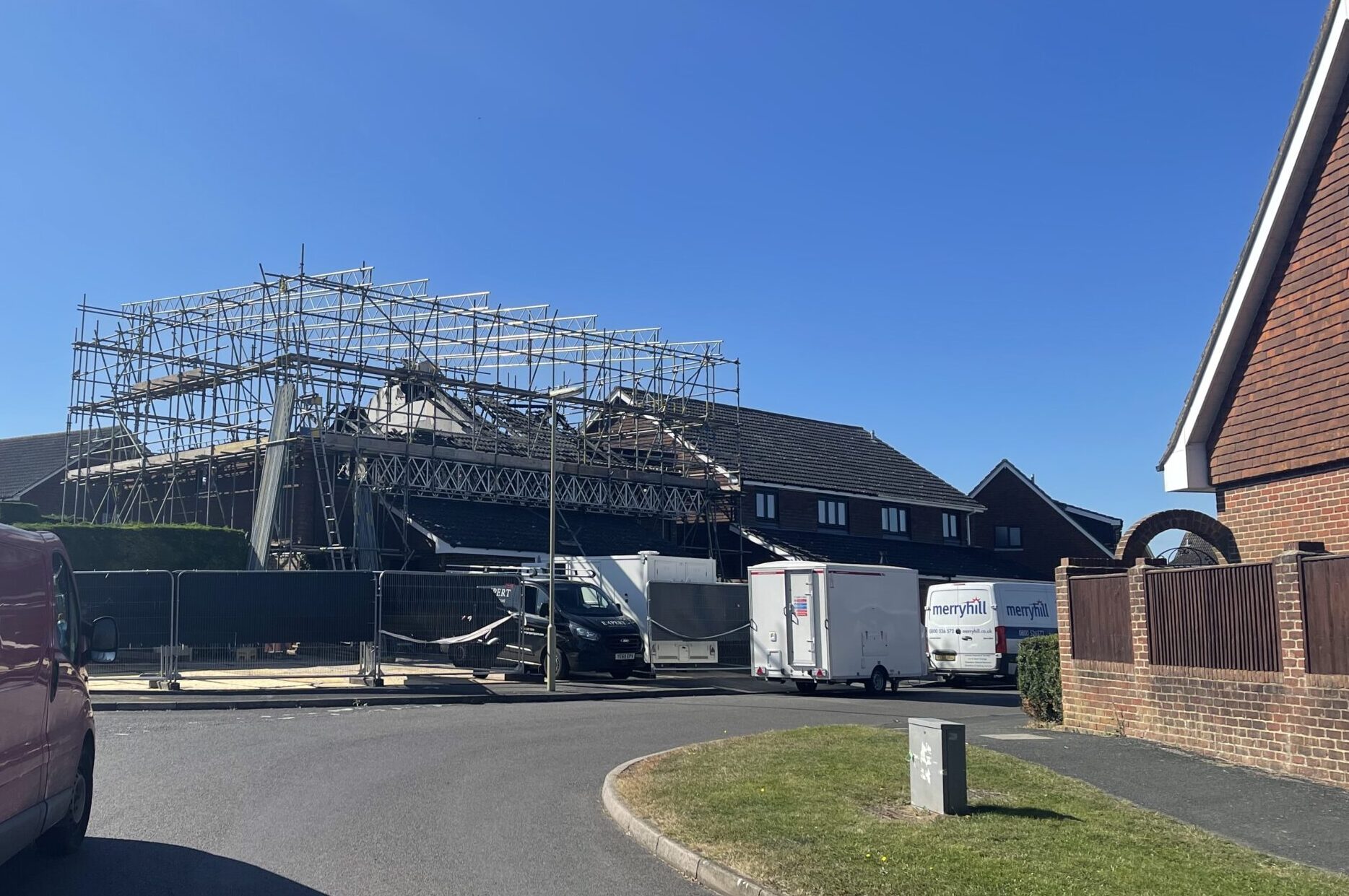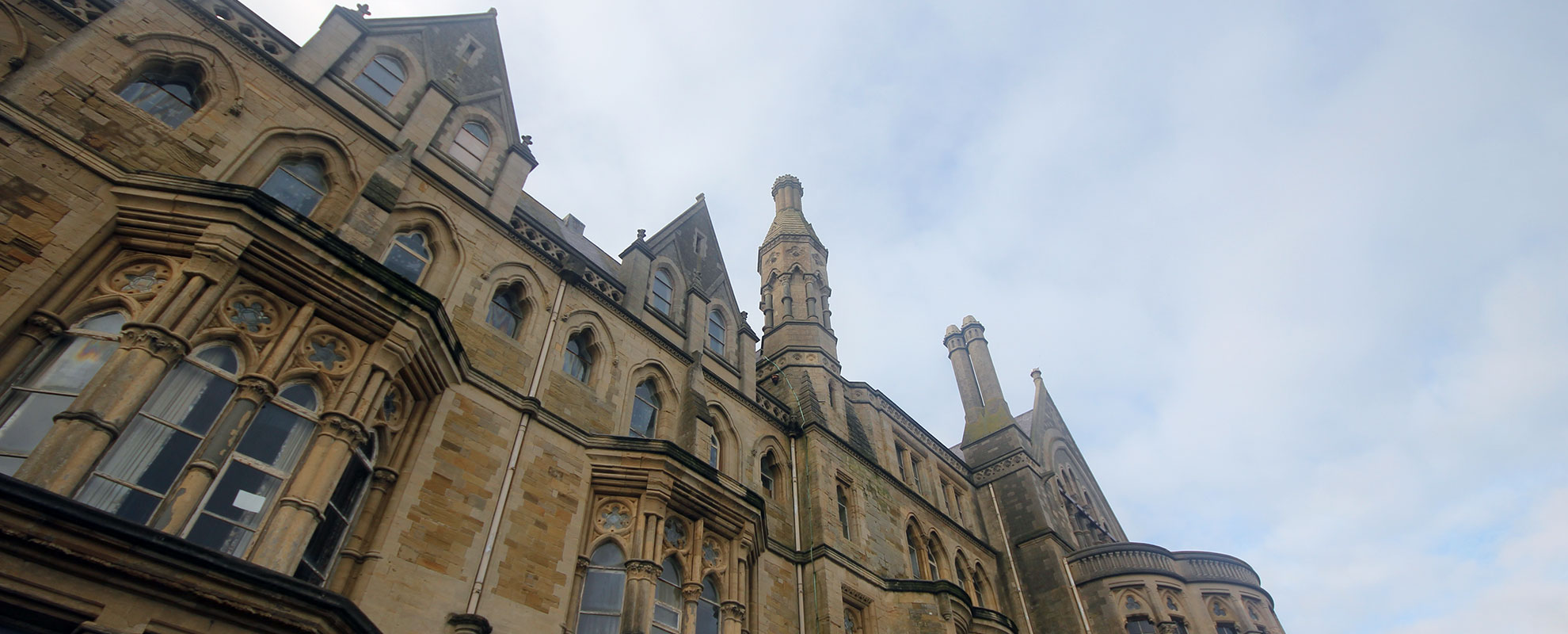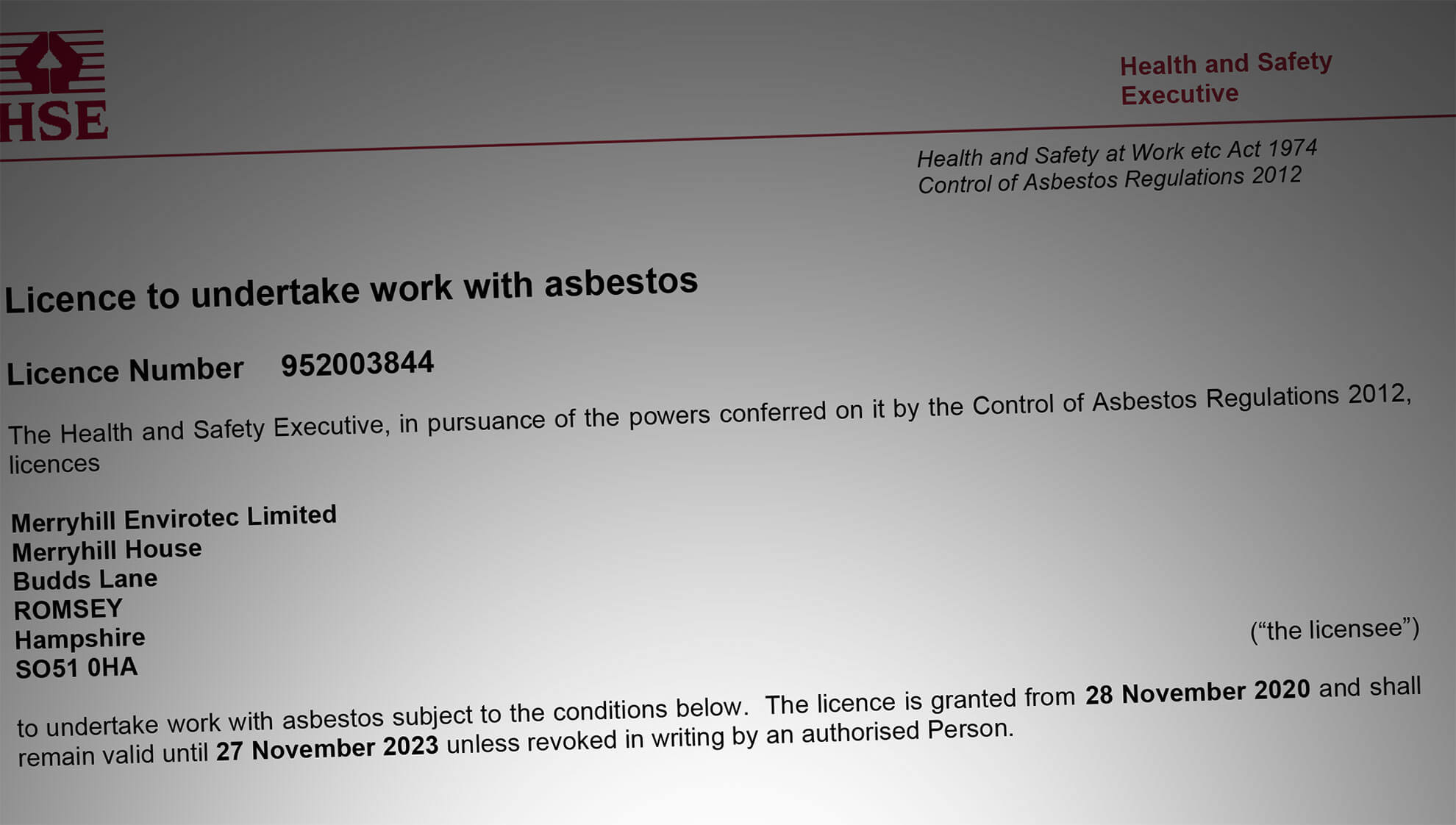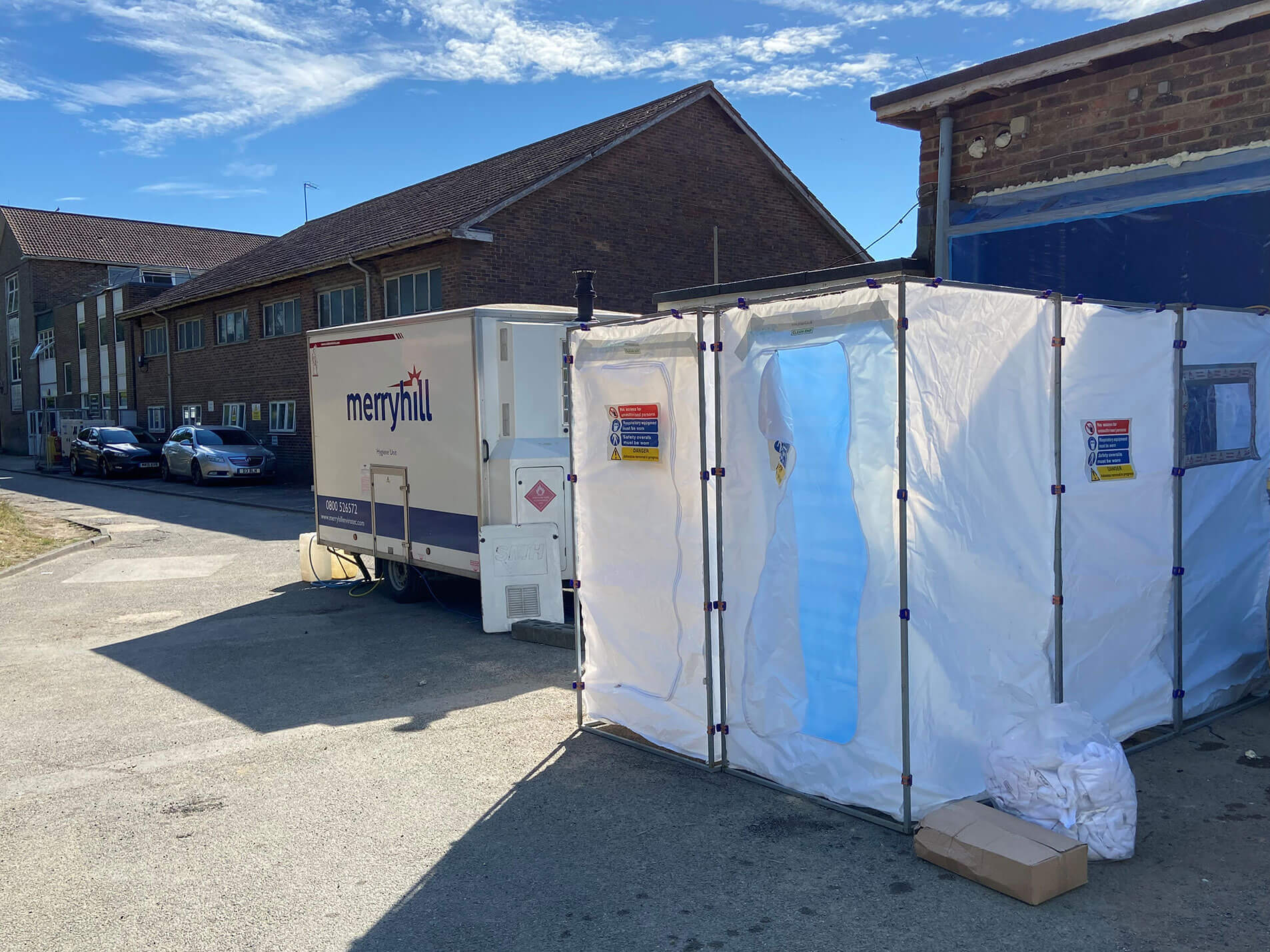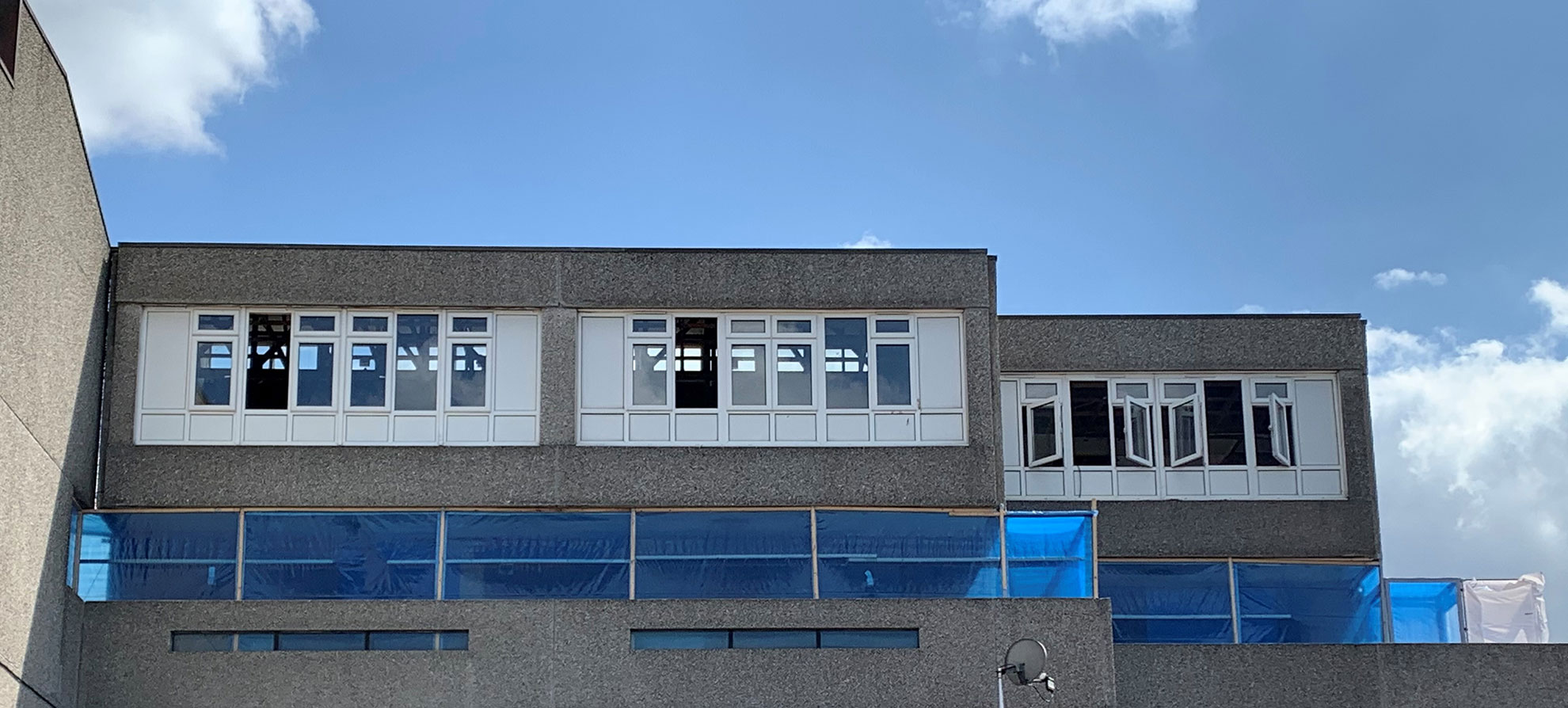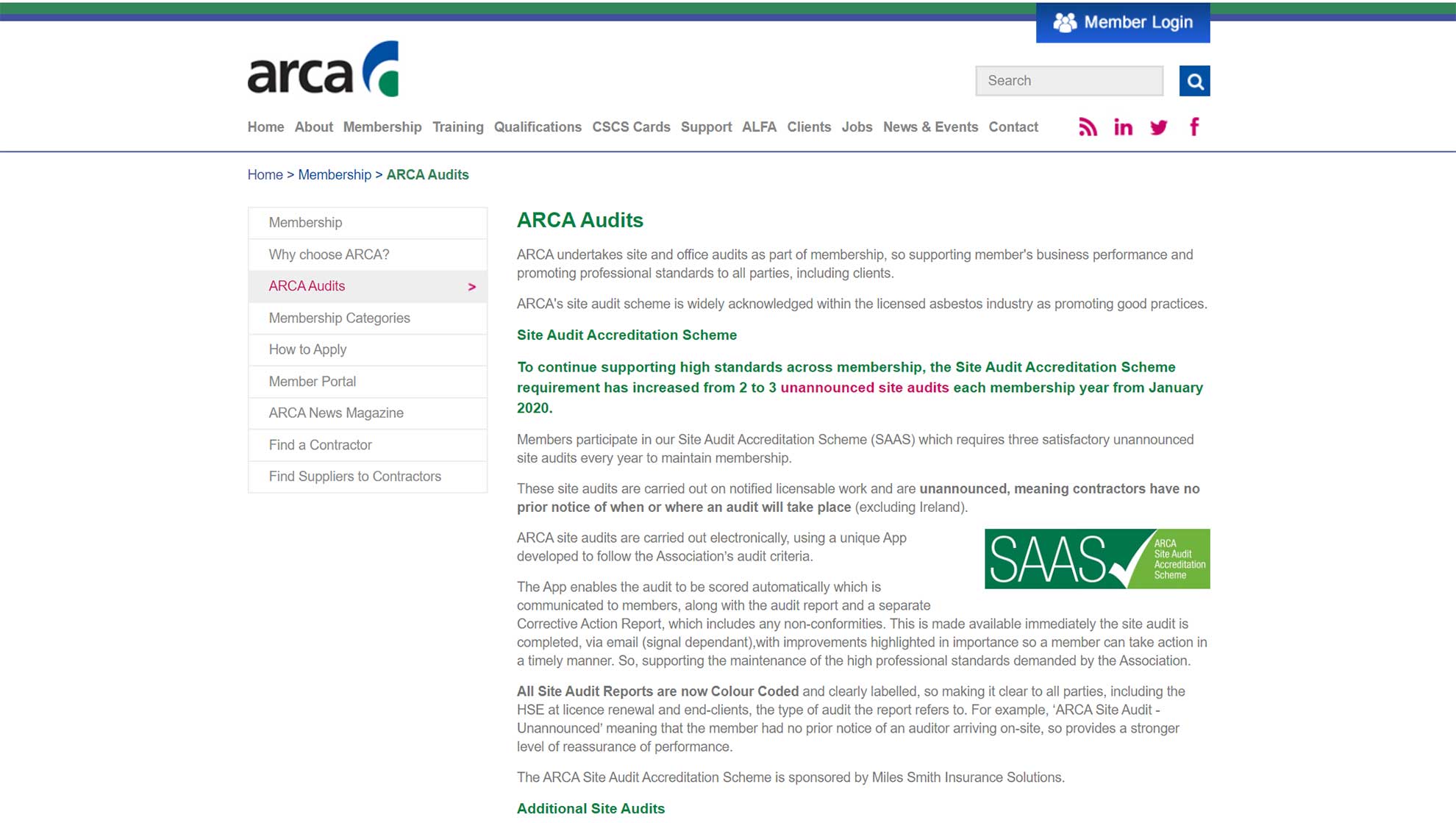Merryhill Envirotec is delighted to announce the appointment of Harriet Bennett to the Senior Management Team as Business Development Manager.
Continue readingMerryhill Envirotec Receives ARCA Gold Site Audit
Merryhill Envirotec are delighted to receive the ARCA Gold Site Audit Award.
Presented by ARCA to recognise member asbestos removal contractors’ who demonstrate consistently high standards on-site. The awards were acknowledged at the Association’s Annual General Meetings, held in October.
In order to obtain the Gold Site Audit Award, full contracting members of ARCA had to display best practices and consistent performance levels by completing six excellent consecutive site audits, with grades A-C on live audits.
Andrew Dart, Managing Director comments, “We are delighted to be recognised by ARCA with the Gold Site Audit Award. Congratulations to our site team for their continued hard work and commitment”.
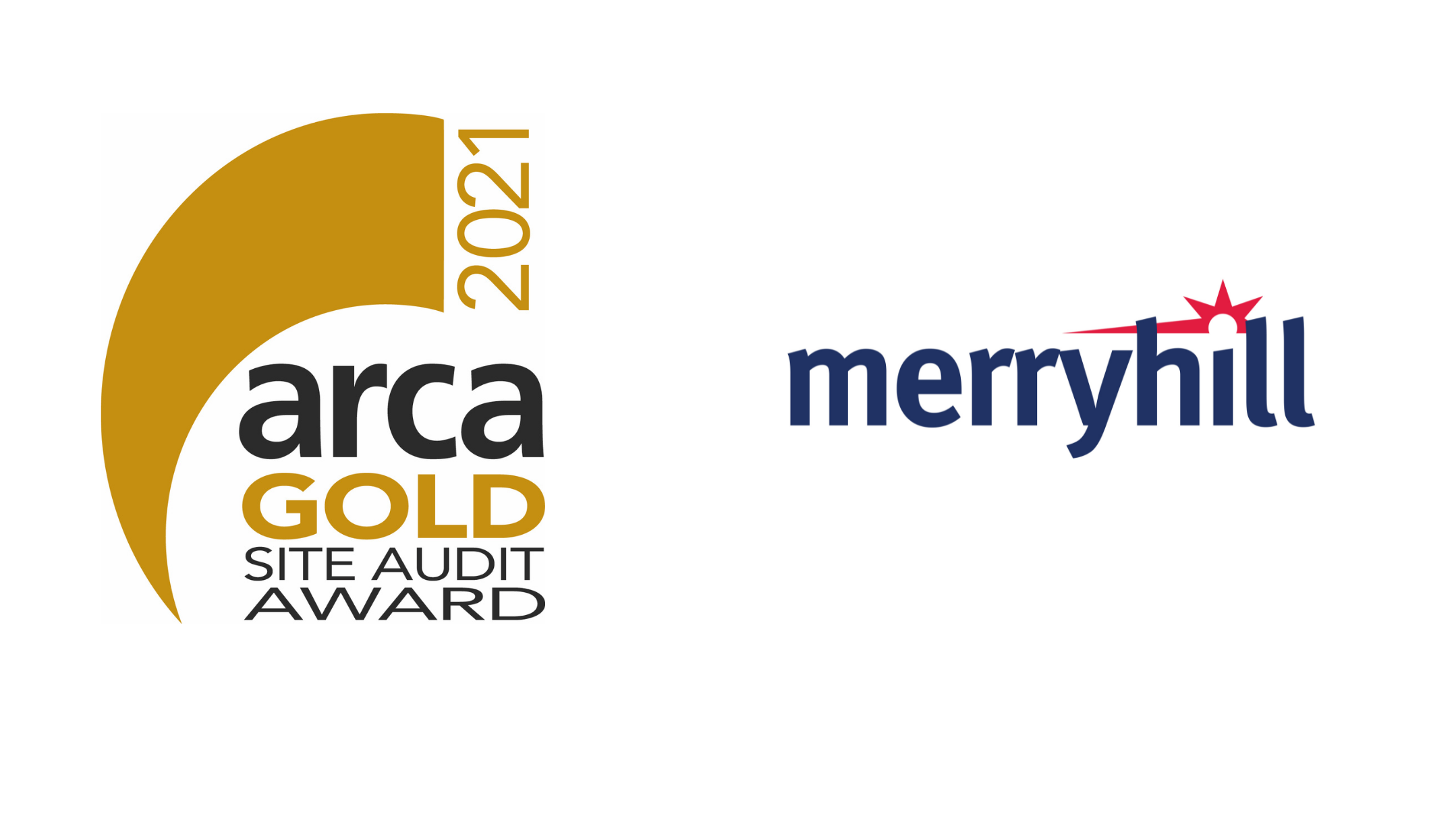
Merryhill Envirotec Recently Complete Asbestos Recovery for Lightning Struck Home
Heritage Project Secured
Merryhill has recently won a competitive tender for a large-scale heritage project in Wales.
The building which is Grade II listed is going to be refurbished once our works have completed. Set over 7 floors, including a large basement area, the building has multiple areas still containing asbestos.
The largest part of the project is the removal of thermal insulation to pipework and residues to walls, ceilings and floors. Merryhill has worked on many other listed buildings and was part of the reason this contract was won.
Working closely with the client, heritage organisations and the local authority, we have agreed our methods for removing the asbestos, whilst retaining as many of the original features as possible.
In addition to the thermal insulation to the basement, there are a number of other areas containing asbestos materials from insulation board, to floor tiles, cement bitumen products.
We will keep you updated on progress throughout the project!
Asbestos Survey Types
There are 3 main asbestos survey types available in the UK as per the HSG264 Guidelines from the HSE.
In addition to the core survey types, asbestos re-inspections are also available for previously surveyed buildings. This re-inspection service is to ensure materials have not deteriorated or become damaged. The infographic below details each type of survey and their associated level of detail. There is a duty to manage asbestos for commercial or industrial buildings if they were constructed before 2000.
An asbestos management survey must be carried out and made available to any trades people carrying out maintenance. For major refurbishment works or if the building is being demolished then a survey must be completed prior before works begin.

Merryhill Secures Renewed 3-Year Asbestos License
Merryhill is very proud to announce that we have secured a new 3-year license from the HSE!
We found the new license renewal application process a challenge and much different to how we had made our applications in the past. Previously, some information was provided in advance, along with the old application form (ASB1). Once these had been submitted, our local HSE Inspector would visit our offices and conduct an interview with the senior management team.
Upon reflection, the new license renewal process has been a good opportunity to reflect and sometimes simplify our own processes.
David Ballan, Business Manager, explained: “when you are not given the opportunity to explain internal processes and methodologies face to face, it forces the mind to focus on ensuring everything is kept as simple as possible. When completing the license renewal application, our aim for each question and piece of evidence submitted was that it was simple for the inspector to understand and digest.
The end result? As we enter our new 3-year asbestos license period, we have made a number of changes to our internal processes. As a business, we are always looking to make improvements to our ways of working. In doing so, our aim is to conduct our work in a safer and more effective manner.
By simplifying things, our aim is to not only cause less confusion for those looking inward, but among our teams. Why have a paragraph, when a sentence will suffice. Could an image tell a better story?
These are all questions we’ll be asking ourselves over this license period as we prepare for our next renewal in 3 years’ time.
Bring it on.”
School Refurbishment Project
Merryhill has recently completed the third stage of a school refurbishment project in Berkshire. The project has been in progress for over 2 years across various phases with the current stage completing prior to the next phase later this year.
The project is the demolition / refurbishment of various school buildings, whilst new blocks are being constructed on the same site.
The project is part of the Department for Educations Priority School Building Programme (PSBP2) which was designed to rebuild or refurbish those school buildings in the country most in need of an upgrade.
Merryhill has carried out asbestos removal works to buildings prior to demolition and managed excavation works around the site where asbestos debris had been located in hotspots.
In the most recent phase, Merryhill has removed asbestos insulation board to bulkheads, around skylights, riser cupboards and a large oil tank room to name a few.
This phase also involved Merryhill having to open and clean over 300m of below-ground ducts to remove asbestos insulation board which had been used as shuttering. This particular element involved careful planning and had to be carried out in phases depending on where the ducts were located.
Also, in order to ensure the buildings were 100% asbestos-free prior to demolition, Merryhill has also removed asbestos-containing bitumen adhesive and floor tiles from large areas of the buildings. Merryhill continue to use Blastrac floor grinding machines with integrated vacuums for all floor adhesive removal projects.
Rejuvenation Project Completed
Merryhill has today completed a huge milestone, achieving practical completion at the Thamesmead project in East London. When initially constructed in the 1960’s, the Thamesmead estate was built as a large-scale social housing project utilising marshland to the southern bank of the river Thames.
The estate is now in the process of being demolished and the area rejuvenated by Peabody as part of a wider long-term project.
Merryhill has just completed the soft-stripping and full asbestos removal of Coralline Walk and the adjoining Evenlode House building. Coralline Walk is a building constructed across various levels and is over 250 metres in length. Inside the building were over 160 maisonettes, flats and bungalows, each with licensed materials within.
Each unit predominately consisted of asbestos insulation board (AIB) door header panels, ceiling bulkheads and a lined under-stairs cupboard. In addition to the AIB, most units had textured coating, floor tiles and asbestos-containing bitumen adhesive. All floors that needed to have bitumen removed were carried out using our Blastrac dustless floor grinding machines with integrated vacuums.
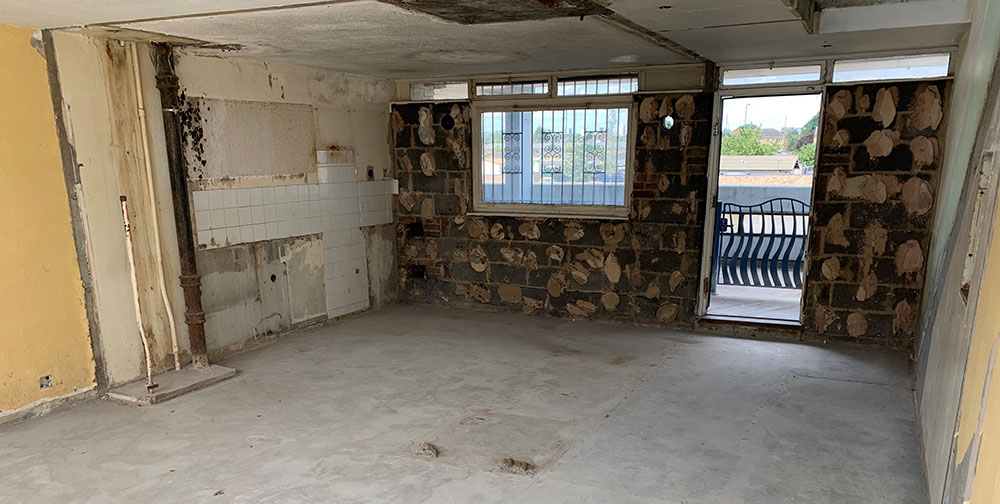
Merryhill utilised the services of a specialist soft-stripping company to remove all fixtures, fittings and partitions from each unit. All waste was segregated and taken from site for either disposal or recycling.
Outside of the individual dwellings, Merryhill also carried out some further large-scale asbestos removal works to communal areas including garages and high-level walkways. The nature of the construction at Coralline Walk was that garages were at ground level and all dwellings built above to prevent any risk of flooding from the nearby Thames. As a result, all walkway removals (as pictured above) had to be carried out with a protective scaffold to prevent any risk of falling during removals.
The project has showcased our ability to continue to work safely during the Covid-19 restrictions and ensure the project remained on track and budget. A credit to all those involved in the project!
ARCA A-Grade Audit
At Merryhill, we pride ourselves on the way we plan projects and carry out asbestos removal whilst on-site.
In a recent audit by ARCA as part of the Site Audit Accreditation Scheme, Merryhill received an A-Grade with no non-conformances or recommendations whatsoever.
Our commitment to quality and health & safety best practice ensures that all projects, no matter how small are meticulously planned. This increased effort at the planning stage ensures that our site teams are well briefed and understand the expectations for each project BEFORE they arrive on-site.
We are in constant contact with our site-teams and encourage open communication. In doing so, any changes to the original plan can be discussed openly.

We are very proud of our asbestos supervisors and operatives. By having a great team, we are able to work together more closely and for the better. We look forward to receiving more A-Grade audits in the future.
Types of Asbestos
What is asbestos? Asbestos is a naturally occurring mineral from the silicate family. Although there are many different types of asbestos fibres, the three most commonly used in the UK were Crocidolite, Amosite and Chrysotile (blue, brown and white respectively).
Each with their own individual characteristics, the widespread use of asbestos became popular, predominately for its insulating properties in addition to providing additional strength to several common building materials.

Crocidolite
Known widely as ‘blue asbestos’ this fibre was voluntarily banned in the UK in 1970. Considered the most dangerous form of commercially used asbestos, Crocidolite fibres are shorty and spikey, meaning then tend to puncture the lining of the lungs causing long-lasting damage. Their spikey shape also mean they are more difficult to breathe out if inhaled.
Crocidolite is part of a family of minerals known as Amphiboles, of which Amosite is also a member. The Amphibole family also include Tremolite, Anthophyllite and Actinolite. These additional 3 minerals are also considered dangerous to humans, although they were used far less frequently due to them being much rarer.
Crocidolite was mainly used in the UK as a sprayed-on insulation, thermal insulation (pipe lagging), loose-fill insulation, asbestos-woven textiles (such as gaskets) and in cement sheeting. Due to its uses for spray / lagging applications and gaskets, Crocidolite was very common in the marine industry for use on ships.
Amosite
Amosite asbestos is more commonly referred to as ‘brown asbestos’. Voluntarily banned from import into the UK in 1980, Amosite is considered another very dangerous form of asbestos.
Almost exclusively mined in South Africa, Amosite was given its name based on the acronym of the producer Asbestos Mines of South Africa. The technical name for Amosite is in fact Grunerite, however it is rarely referred to under this name.
Amosite is the most commonly found Amphibole type of asbestos. More course and stronger than Chrysotile fibres, Amosite was widely used in rigid boards such as asbestos insulation boards (AIB). Amosite can be found as the only asbestos ingredient in AIB, but is often used as part of mixture with Chrysotile.
Chrysotile
Chrysotile is by far the most commonly found asbestos type, not just in the UK, but worldwide. Unlike Amosite and Crocidolite, Chrysotile is part of the Serpentine family of minerals and as such has different characteristics in terms of fibre shape. Chrysotile is made up from small curly fibres. This enables fibres to be breathed out more easily as they are less likely to become lodged in the lungs or other parts of the respiratory system.
Chrysotile is by far the most common of all types of asbestos, accounting for over 90% of all that used in building materials
Often referred to as ‘white asbestos’, over 90% of all commercially used asbestos was Chrysotile. Chrysotile was the last type of asbestos to be banned in the UK. Amosite and Crocidolite were officially banned in 1985 as part of the Asbestos (Prohibitions) Regulations. These regulations were updated in 1992 to include Chrysotile. Chrysotile was banned completely in the UK from 1999.
Although proven to be a cause of respiratory disease, Chrysotile does pose a smaller risk than other types of asbestos from the Amphibole family. Still mined today in several countries across the globe including India, Brazil, Russia and China, Chrysotile continues to be used in developing countries despite the now-known health risks.
Common Types of Asbestos Materials
- Loose fill asbestos insulation (used in lofts, floor voids and within partition walls)
- Sprayed coatings (known as limpet)
- Pipe lagging
- Insulating board (AIB)
- Ropes, yarns and cloths (primarily used in older fuse boxes and pipe gaskets, but also gloves and fire blankets)
- Paper (backing used for flooring applications)
- Bitumen felts and associated products
- Flooring materials (both sheet vinyl and thermoplastic tiles)
- Textured coatings and paints (often referred to as Artex)
- Mastic, sealants and putties (often used as a glazing bead and in very old wall plugs)
- Reinforced plastics (toilet seats and cisterns)
The above list is ordered from most to least dangerous. It should be noted that all types of asbestos have the potential to pose a risk if not handled or removed appropriately. The top 6 should only be removed or treated by a licensed asbestos removal contractor. Items 7-11 do not require a licensed contractor, however those looking at having such products removed should be competent and have sufficient training as highlighted by the HSE. If you are in any doubt about a material that is suspected or known to contain asbestos, get in contact and a member of our team will be more than happy to help.


